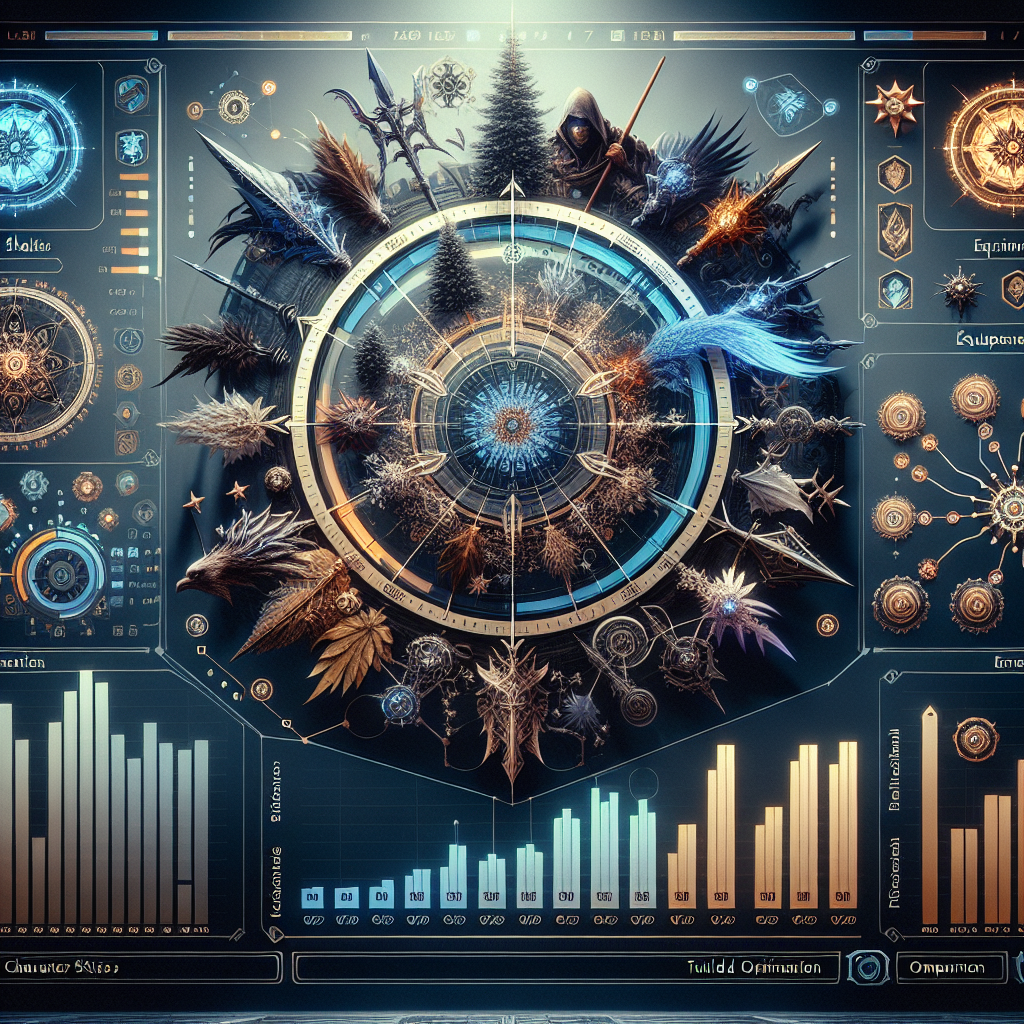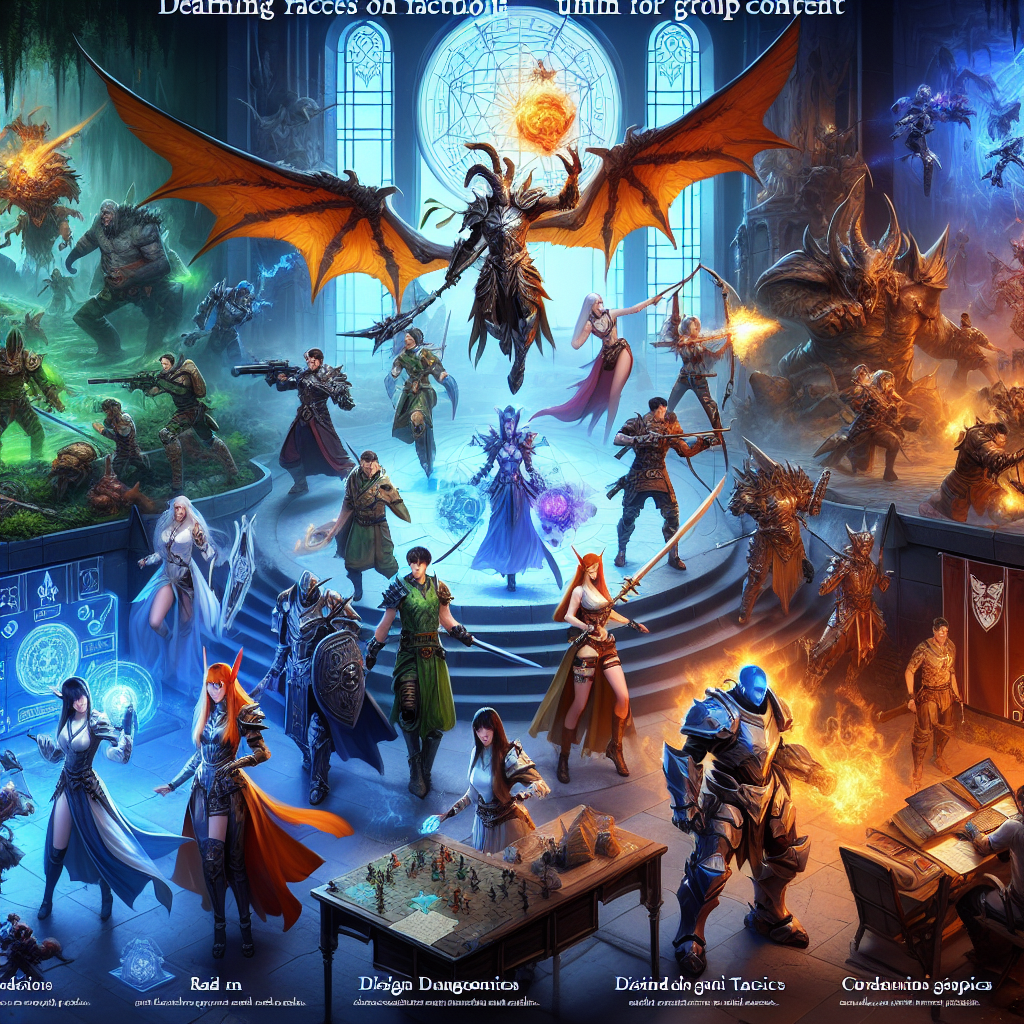Races & Factions in MMOs: How Lore Shapes Game Design
When it comes to immersive, engaging massively multiplayer online (MMO) games, the richness of the game world's lore can make all the difference. From the fantastical realms of Azeroth to the gritty underbelly of New Edington, the factions, races, and backstories that players interact with are crucial in shaping the overall experience.
In this comprehensive guide, we'll dive deep into the role of lore in MMO game design, exploring how the narrative and world-building elements profoundly impact the mechanics, faction dynamics, and player engagement. Whether you're a seasoned MMO veteran or a budding game designer, understanding the intricate connections between lore and game design will give you a powerful edge in creating truly captivating virtual worlds.
The Foundational Role of Lore
Lore, in the context of MMOs, refers to the rich tapestry of history, cultures, and narratives that underpin the game world. It's the foundation upon which the entire experience is built, providing the context, motivation, and depth that breathe life into the virtual environment.
Establishing the Game World
The lore of an MMO serves as the bedrock for the game world, shaping its geography, resources, and the very essence of the environment itself. From the harsh, volcanic landscapes of Mordor to the lush, verdant forests of Elvenkind, the game world's physical attributes are intrinsically linked to the lore that defines them.
This connection goes beyond mere aesthetics – the lore directly influences the game mechanics, resource availability, and the challenges that players will face. For example, a region ravaged by a ancient curse might be plagued by dangerous creatures or cursed resources, while a thriving, peaceful kingdom might offer bountiful harvests and opportunities for trade and exploration.
Defining Races and Factions
At the heart of any immersive MMO experience are the various races and factions that populate the game world. These distinct groups, each with their own histories, cultures, and agendas, are the primary drivers of the game's narrative and the catalyst for player interactions.
The lore behind each race and faction not only shapes their visual design and cultural attributes, but also informs their unique playstyles, strengths, and weaknesses. A noble, arcane-wielding elf faction, for instance, might excel at long-range combat and magical support, while a brutish, warlike orc clan could specialize in melee combat and raw, physical power.
These faction-based differences don't just affect character customization and class selection – they also drive the underlying conflicts and alliances that unfold throughout the game world. Players may find themselves caught in the middle of age-old feuds, forced to choose sides and forge strategic partnerships to achieve their objectives.
Fostering Player Investment
Perhaps most importantly, the lore of an MMO is the primary driver of player investment and immersion. By crafting a rich, compelling narrative that players can actively engage with, game designers can create a deep sense of connection and investment in the virtual world.
When players feel that their actions have real consequences, that their choices matter, and that they are part of a larger, ongoing story, they become invested on a deeper level. This, in turn, leads to increased player retention, more meaningful social interactions, and a heightened sense of personal investment in the game's outcomes.
Lore-Driven Game Design
With the foundational role of lore established, let's explore how game designers can leverage this powerful element to create truly engaging and immersive MMO experiences.
Faction Dynamics and Player Choices

One of the most crucial ways that lore shapes game design is through the intricate web of faction dynamics and the player choices that emerge from them. By crafting rich backstories and conflicting agendas for the various factions, designers can create a gameplay experience that is driven by player agency and the consequences of their actions.
For example, in a game like World of Warcraft, the longstanding rivalry between the Alliance and the Horde is a central part of the game's lore. Players must choose a side, and their faction allegiance not only affects their character's abilities and customization options, but also determines the quests they can undertake, the enemies they'll face, and the alliances they can forge.
This faction-based gameplay creates a sense of belonging and investment, as players feel that their choices have a tangible impact on the game world. It also fosters a rich ecosystem of player-driven content, from faction-specific PvP battles to complex political machinations and espionage.
Narrative-Driven Progression
Another way that lore shapes game design is through the integration of narrative-driven progression. Rather than relying solely on linear quests or grind-based leveling, MMOs can leverage their lore to create a more organic, story-driven progression system.
By embedding key narrative arcs and milestones within the game's overarching lore, designers can guide players through a compelling journey that feels intrinsically tied to the world and its inhabitants. This could involve players uncovering ancient secrets, unraveling long-forgotten mysteries, or even directly shaping the course of history through their actions.
For example, in the Elder Scrolls Online, the main storyline tasks players with investigating the return of the dangerous Daedric Prince Molag Bal and his attempts to merge Tamriel with his own plane of Oblivion. As players progress through the narrative, they not only level up and acquire new abilities, but also unlock deeper insights into the game's lore and the complex relationships between the various factions and races.
This narrative-driven approach to progression not only enhances player immersion, but also encourages exploration, discovery, and a sense of personal investment in the game world and its ongoing story.
Faction-Specific Content and Rewards
Building on the concept of faction dynamics, MMO designers can further strengthen the role of lore by offering faction-specific content and rewards. This could include unique quests, storylines, dungeons, or even entire regions of the game world that are only accessible to members of a particular faction.
By tailoring content and rewards to the specific lore and motivations of each faction, designers can create a sense of exclusivity and heighten the value of faction allegiance. Players may be drawn to a particular faction not just for its aesthetics or mechanics, but for the unique narrative experiences and tangible benefits it offers.
For instance, in Star Wars: The Old Republic, the Sith Empire and the Galactic Republic offer vastly different questlines, storylines, and rewards that are deeply rooted in the lore of the Star Wars universe. A player who aligns with the Sith will have a dramatically different experience than one who chooses to join the Republic, further reinforcing the importance of faction choice and the depth of the game's narrative.
Worldbuilding and Environmental Storytelling
Lore also plays a crucial role in the overall worldbuilding and environmental storytelling of an MMO. By carefully crafting the game world's geography, architecture, and visual aesthetics to align with the established lore, designers can create a cohesive and immersive experience that resonates with players on a deeper level.
This goes beyond simply creating aesthetically pleasing environments – it's about imbuing the world with a tangible sense of history, culture, and purpose. From the crumbling ruins of a long-forgotten civilization to the towering, awe-inspiring structures of a powerful ancient empire, the game world should feel like a living, breathing extension of the lore that defines it.
Environmental storytelling, in particular, can be a powerful tool for conveying lore and narrative without relying solely on text-based exposition. By strategically placing environmental clues, such as journal entries, architectural details, or the remnants of past conflicts, designers can encourage players to piece together the story of the world around them, fostering a greater sense of discovery and investment.
Key Considerations for Lore-Driven Game Design
As you embark on the journey of crafting a lore-rich MMO experience, there are several key considerations to keep in mind:
Balancing Lore and Accessibility
One of the primary challenges in lore-driven game design is striking the right balance between depth and accessibility. While a rich, complex lore can be captivating for dedicated players, it's essential to ensure that newcomers and casual players can still engage with the game world and its narrative without feeling overwhelmed.
This may involve carefully introducing lore elements through tutorial-like quests, providing optional in-game resources for deeper exploration, or using narrative techniques that allow players to gradually immerse themselves in the world's history and culture.
Maintaining Narrative Consistency
Consistency is key when it comes to lore-driven game design. Players expect a cohesive, well-crafted narrative that feels true to the established world and its rules. Designers must be vigilant in ensuring that new lore additions, updates, and expansions seamlessly integrate with the existing narrative, avoiding contradictions or plot holes that can shatter player immersion.
This may require extensive planning, rigorous world-building, and close collaboration between writers, designers, and the development team to ensure that the lore remains a reliable, trustworthy foundation for the game.
Adapting to Player Feedback and Emergent Narratives
While maintaining narrative consistency is crucial, MMO designers must also be prepared to adapt and evolve the lore in response to player feedback and emergent narratives that arise from the community.
As players engage with the game world and explore its depths, they may uncover new narrative possibilities, uncover hidden lore, or even suggest alternative interpretations that resonate with the community. Designers should be receptive to these player-driven narratives and use them as opportunities to further expand and enrich the game's lore.
By striking a balance between a well-crafted, cohesive narrative and the flexibility to incorporate player-driven content, designers can create a truly living, breathing virtual world that feels responsive and authentic to the player base.
Key Takeaways
In the world of MMOs, the lore that defines the game's races, factions, and virtual environments is the lifeblood of the experience. By leveraging this powerful narrative element, designers can create deeply immersive, engaging, and compelling virtual worlds that captivate players and foster a sense of investment and belonging.
Some key takeaways from this exploration of lore in MMO game design:
- Lore serves as the foundational bedrock for the game world, shaping its geography, resources, and the very essence of the environment.
- Faction dynamics and player choices are crucial in lore-driven game design, fostering a sense of belonging and investment.
- Narrative-driven progression and faction-specific content can enhance player immersion and encourage exploration of the game's lore.
- Worldbuilding and environmental storytelling are powerful tools for conveying lore and narrative without relying solely on text-based exposition.
- Balancing lore depth with accessibility, maintaining narrative consistency, and adapting to player-driven narratives are key considerations for successful lore-driven game design.
By embracing the power of lore and weaving it seamlessly into the fabric of the game, MMO designers can create virtual worlds that captivate players, foster meaningful social connections, and leave a lasting impression long after the final quest is completed.





